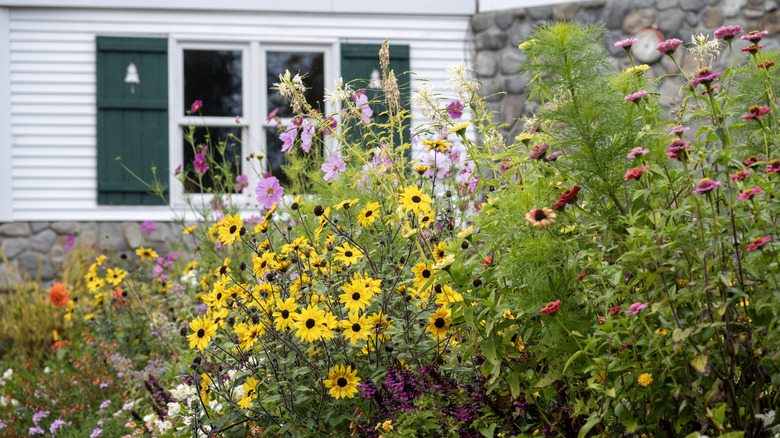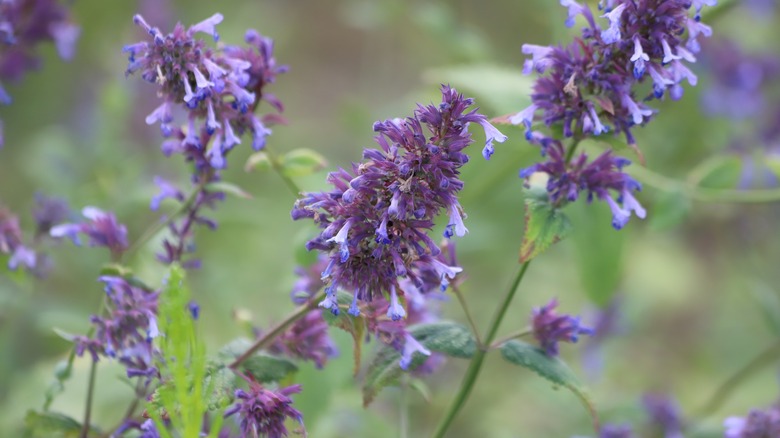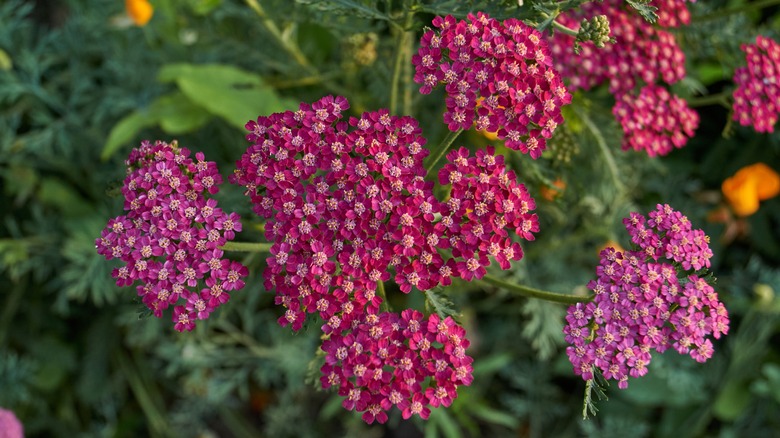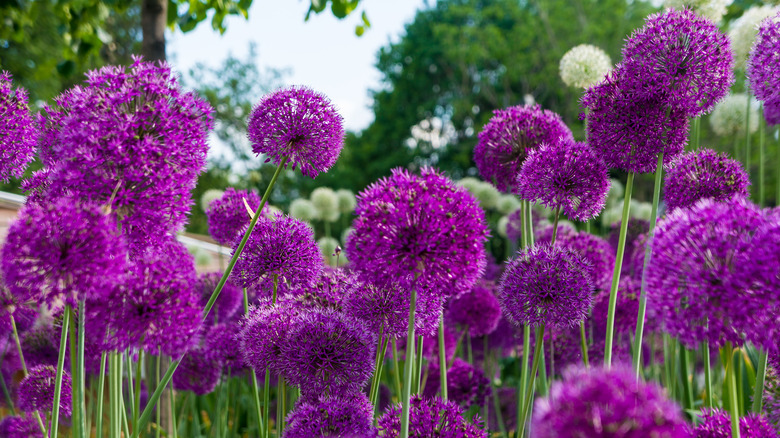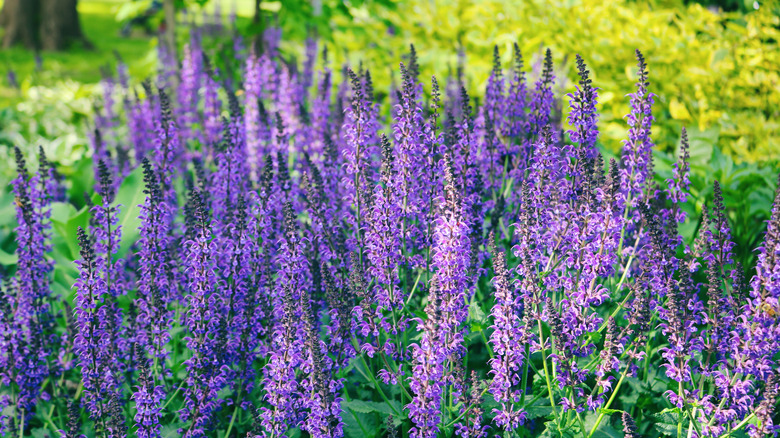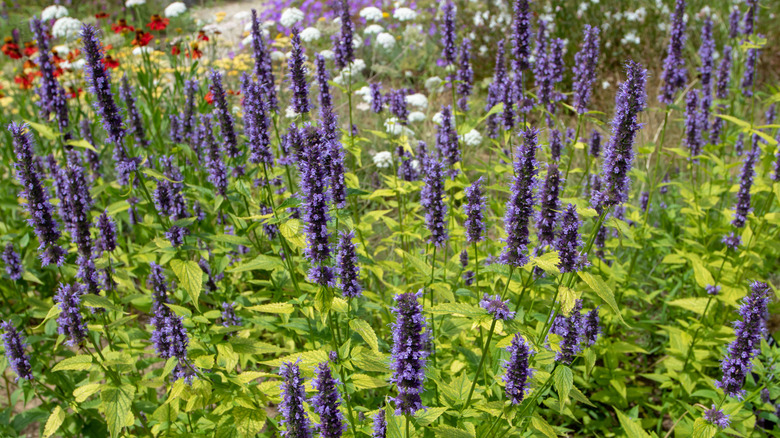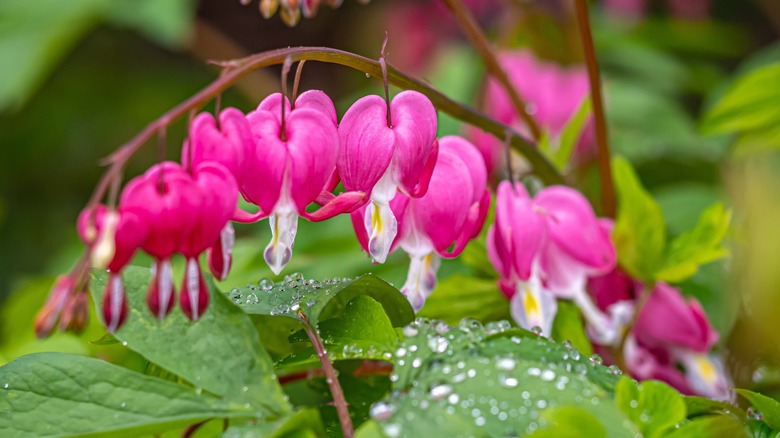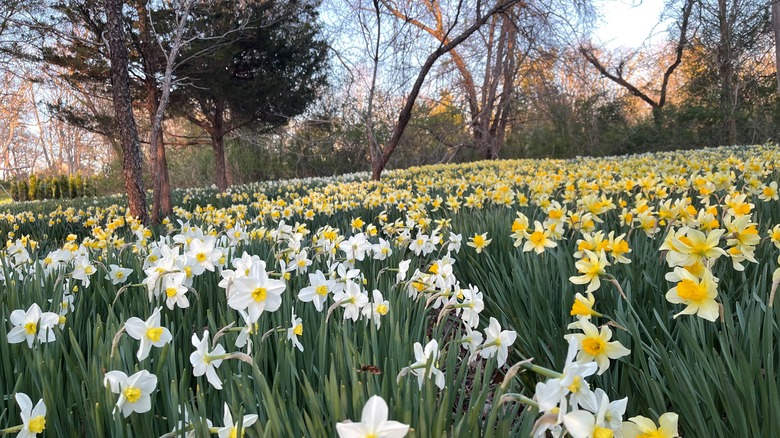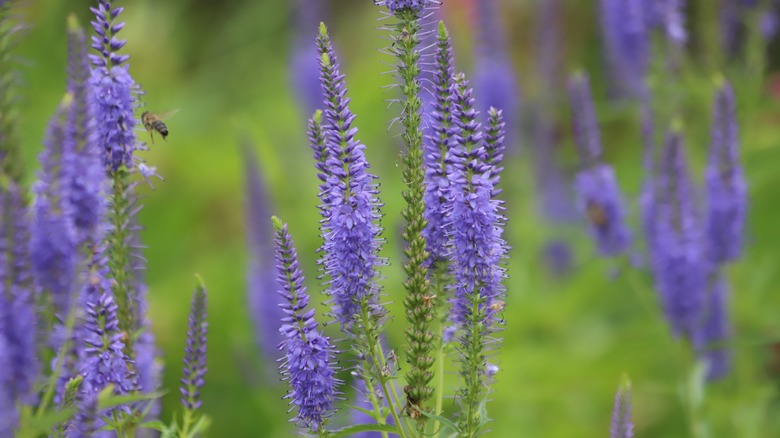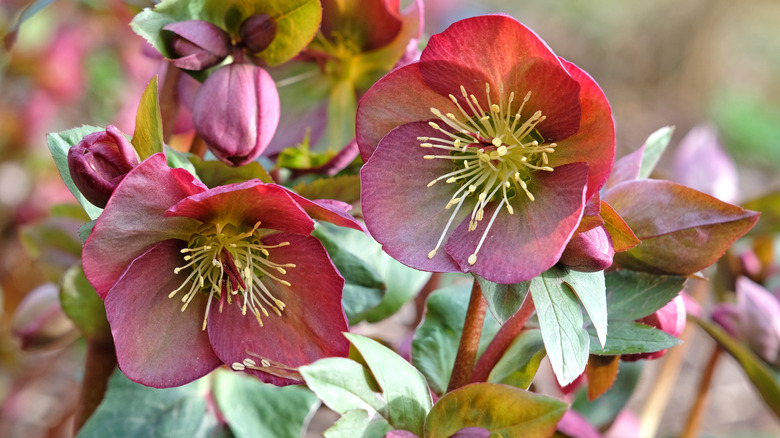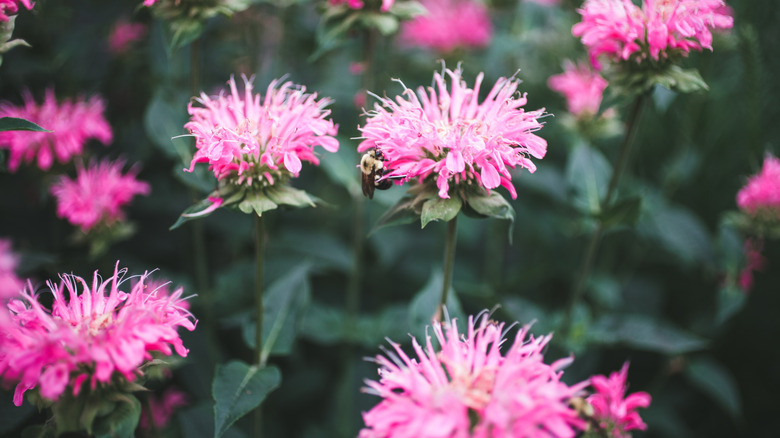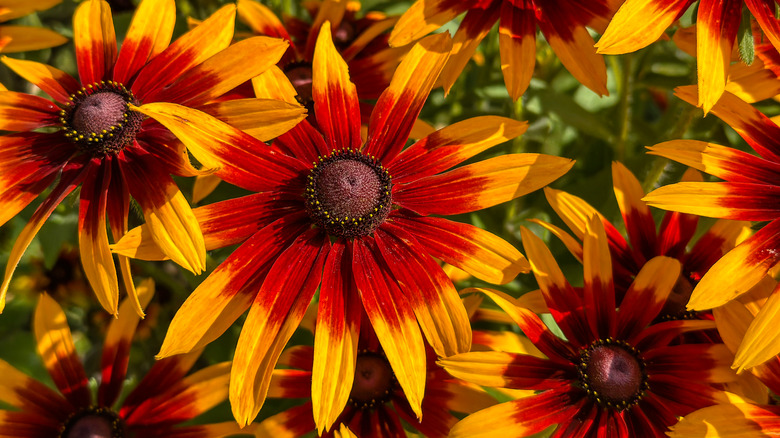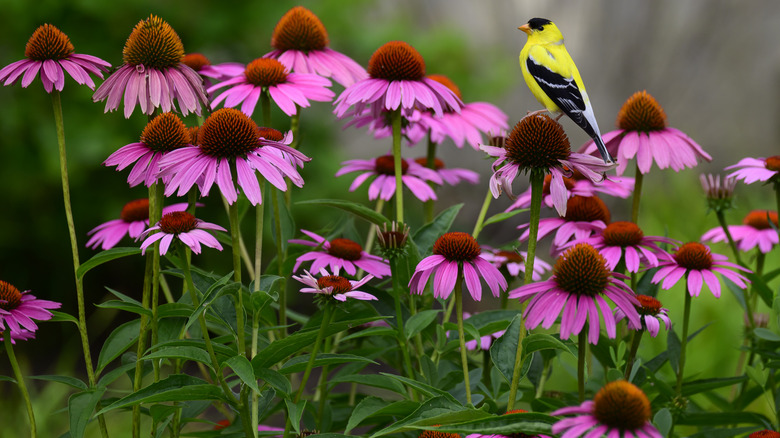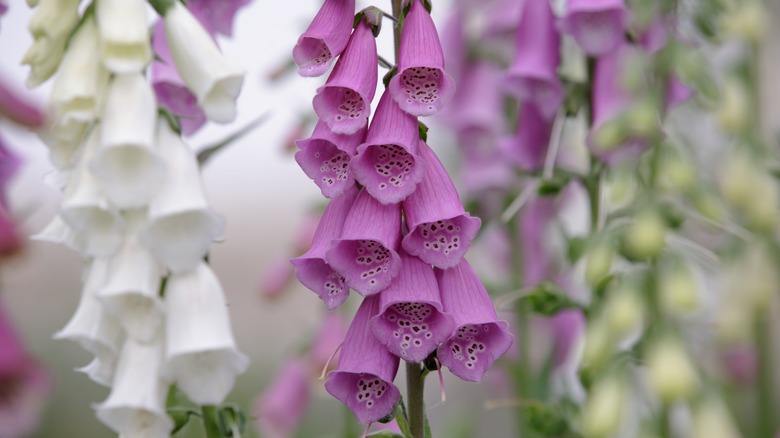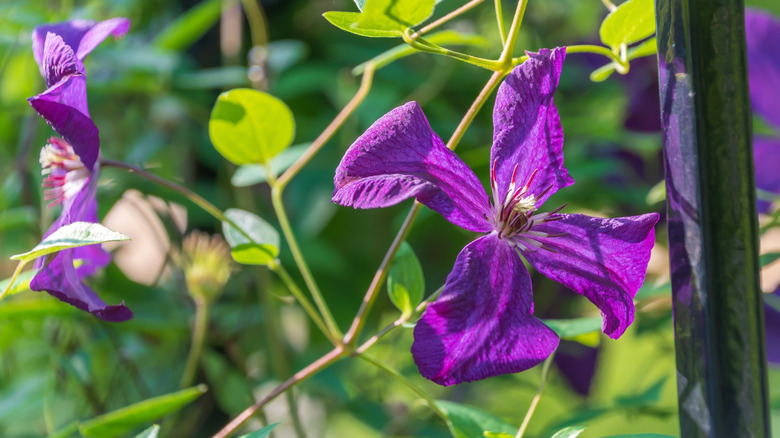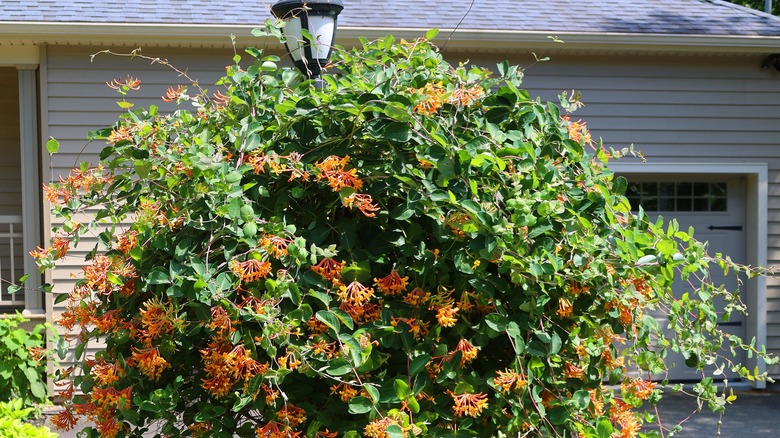The Ultimate Plant List To Build The Perfect Cottage Garden
Even if you can't explain why, cottage gardens are one of those things (like poetry, personal coaches, and obscenity) that you know when you see. They're marked by a certain density and informality. They look like a riot of perpetual color from a distance, but you can zoom in to individual specimens that are masterpieces all their own ... if you can tell where one plant begins and the others end. The informal exuberance of the cottage garden says something about the joy we take in plants rather than the satisfaction we might gain from mere botany.
As you might expect, a lot of work goes into making something so chaotic in such a perfectly prescribed fashion. Plants are chosen by their growing seasons and blooming times, and they're layered to complement each other and keep the eye busy wherever one's gaze falls within a border along a pathway. Plantings are marked by diversity, and in the way of such a natural setting tend to create a hospitable environment for visitors like butterflies, bees, hummingbirds, song birds, and probably even birds that can't carry a tune at all.
The effect can be nostalgic, but nostalgia is a bit silly, since you can and should have a cottage garden right now. It's not like a gorgeous, fragrant cutting garden is going to go out of style, except perhaps in HOA-dominated suburbs where style isn't allowed in the first place. Let's look at a few cottage garden options, moving roughly from the short plants at the front of the border to the tall, dignified sentries and anarchist fence-climbers who bring up the rear.
Catmint
One thing you'll notice about a cottage garden border is its populism and pluralism. Whatever patrician tones you're picking up in the speech affectations of a cottage gardener, they are perfectly happy to include just about any plant that works. One such plant is catmint (Nepeta spp.) — unsurprisingly, a mint closely related to catnip. You can grow catnip easily, and it's a sturdy plant thanks to its drought tolerance and fast growth, and is further appealing in its compact growing habit, gray-green leaves, and long-lived lovely purple, white, and pink summer blooms.
Yarrow
Yarrow (Achillea spp.) is so easy to grow that you might not even be consciously aware you're doing it until its frozen fireworks completely take over the front of your border. For much of the growing season, yarrow looks like something designed by a committee of bees: how would it be, one bee might buzz, if the plant were little more than a huge landing zone made up of thousands of individual flowers? The answer is that it would be very good indeed, and however many vases you fill with cut yarrow ... the bee committee will never be in short supply.
Allium
Unless you walk into the garden thinking about chives, you probably wouldn't intuitively associate allium (Allium spp.) with onions. But these are essentially ornamental onions, or perennial bulbs that decorate your flower beds with little defined bursts of color that might be the balloons of flower fairy children winding their way through the stalks and stems. With heads up to 6 inches across and stalks as long as 3 feet, you might imagine that alliums belong in the background. But what little foliage they have is unobtrusive, and allium looks great just floating above the fray.
Salvia
If you Google salvia (Salvia spp.), your search engine — incompetent, in spite of knowing millions of things about you — might suggest a page called something like "What does salvia do to your brain?" Well, the hope here is that it makes you want to have an English cottage garden. Such is the glory of salvia that it's hard to imagine a cottage garden without it. There's a huge variety to choose from: annuals and perennials, herbaceous and shrubby, strong spikes and scattery stalks, all in an endless array of colors.
Hyssop
If salvia says "English cottage garden," hyssop might say something Biblical or medicinal, and perhaps a little mysterious. Some of the mystery comes from the fact that hyssop is (at least) two different genera of plants: Hyssopus officinalis and Agastache foeniculum. Both are perennials in the mint family that are at home in a cottage garden. Hyssop (Hyssopus officinalis) with its blue, purple, and lavender flowers, and anise hyssop (Agastache foeniculum) for its fragrant blue blooms. Lots of folk remedies for ancient diseases make use of hyssop, though we might recommend something stronger for leprosy these days.
Bleeding heart
Names are a necessary part of introduction, and if you're not already familiar with bleeding heart, it's probably already at a disadvantage with such a name. Instead, refer to it by its genus, Dicentra, and enjoy its pretty heart-shaped flowers in the shadier spots of your cottage garden. The white and pink runs of blooms – with cultivars that have fantastic names like "squirrel corn" and "Dutchman's breeches" — might not be as spectacular as other cottage garden favorites from a distance, but up close, you'll have a hard time topping Dicentra. Bleeding heart grows tall enough to straddle the border between the front and mid-bed plantings.
Daffodil
Between the front and middle sections of your cottage garden border, you are likely to find yourself planting a daffodil (Narcissus spp.) or a hundred. Choosing to grow daffodils can be predictable, yes, but they're predictably full of joy. They're what young children would draw when tasked with drawing a flower, if only they could draw better. These bulbs are often found around trees and shrubs, in spite of their need for full sunlight. Plant them in groups bridging the front and middle sections of your flower bed.
Speedwell
Veronica Speedwell is the name of a fictional Victorian orphan scientist-turned-sleuth in a titular book series, so it's reasonable to expect a little drama. But speedwell (Veronica spp.) is having none of it. They are accommodating, with species suitable for zones 3 through 11 and growth habits ranging from groundcover to tall bedding plants. The most eye-catching thing about them might be their blue, purple, pink, or white spikes of flowers, which are gorgeous and attract more pollinators than bad guys.
Hellebore
Let's face it: more people don't adore hellebores (Helleborus orientalis) because there's something deeply wrong with a certain percentage of the population. No judgment; someone has to keep the lawn flamingo and painted hubcap industries afloat. But for anyone who desires a cottage garden, Lenten roses (another name for hellebores) have a lot to offer. They come in just about every imaginable color, but the most beautiful are the antique varieties ... ivory, dusty reds, and purples that are really all but black. And you'll have to trust us on this one: don't shy away from the species known as the stinking hellebore.
Bee balm
Bee balm (Monarda spp.) is full-action, mid-border pyrotechnic explosion of red and red-adjacent blooms (and white, sometimes). This perennial plant is another mint that's also known as wild bergamot for its scent's resemblance to bergamot orange oil, the operative non-tea ingredient in Earl Grey. It's a long-lived perennial that spreads by both seed and its root system, so you might save a little effort by letting it propagate itself. But you'll happily spend that energy deadheading the herb, which ensures it will produce as much as possible.
Black-eyed susan
Black-eyed susans (Rudbeckia hirta) bloom prolifically in the late summer in the mid-border area, just as other flowers are petering out for the year. They look a lot like some varieties of coneflower (Echinacea spp.), and you might need help distinguishing a black-eyed susan from a sunflower. Classic Rudbeckia varieties are yellow with a dark brown center that can be stunning, but two-tone varieties can bring a more festive or even an antique look to the blooms. There are both perennial and annual varieties to consider, but why not plant both? Give them full sun and get ready.
Coneflower
As stated, Rudbeckia is very similar to some varieties of coneflower (Echinacea spp.). In fact, they have been cross-bred to produce an herbaceous perennial called Echibeckia, though there can be no good answer for why it's not called Beckinacea. In any event, coneflowers bring disease resistance to black-eyed susans, which is why they're often found in immune system-boosting supplements. Regular coneflowers are perfectly at home in either your cottage garden border or in wild meadows.
Foxglove
Moving to the back of the cottage garden bed, you might find the distinctive spikes or cones of foxglove (Digitalis purpurea), which produce ample blooms starting in May and June. You can keep them going for some time with a little deadheading. They can cope with shade, but a couple of hours of sunlight, preferably in the morning, are required. Plant them with other cottage garden flowers that like moist soil, and keep them away from children and animals that might be tempted to chew on them; these plants are toxic.
Clematis
For vines, turn to clematis (Clematis spp.). But where to begin, exactly? "Clematis" describes 386 species and thousands of cultivars of this lovely vine, and each has its charms (and its own requirements). Give any variety of clematis a structure to climb, then get out of the way and enjoy its sometimes delicate, sometimes showy blooms. They want lots of sun and rich soil, and in return they give your garden wall a new identity as the star of your cottage garden show. But keep in mind that these are highly toxic.
Trumpet honeysuckle
While we're decorating our fences and walls, we'd be remiss not to recommend honeysuckle — at least, the native variety, as many non-native varieties are invasive. The coral or trumpet honeysuckle (Lonicera sempervirens) has a dense, chaotic growth habit. It might be useful on fences or structures you want to obscure or as a privacy screen. There are both climbing and bush varieties. Most have a distinctive honeysuckle fragrance, as well as colorful berries. Because of its blooms, density, and scent, many native varieties of honeysuckle can be the center of attention in your cottage garden.
